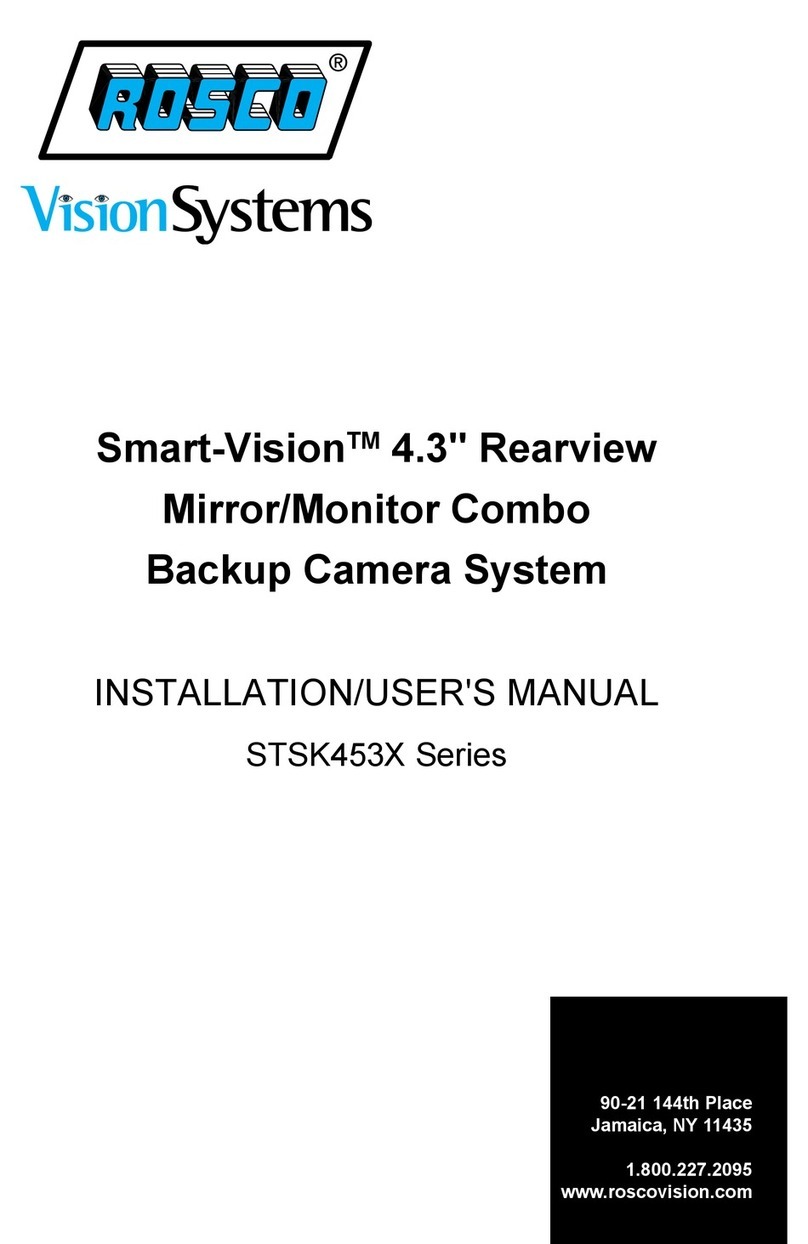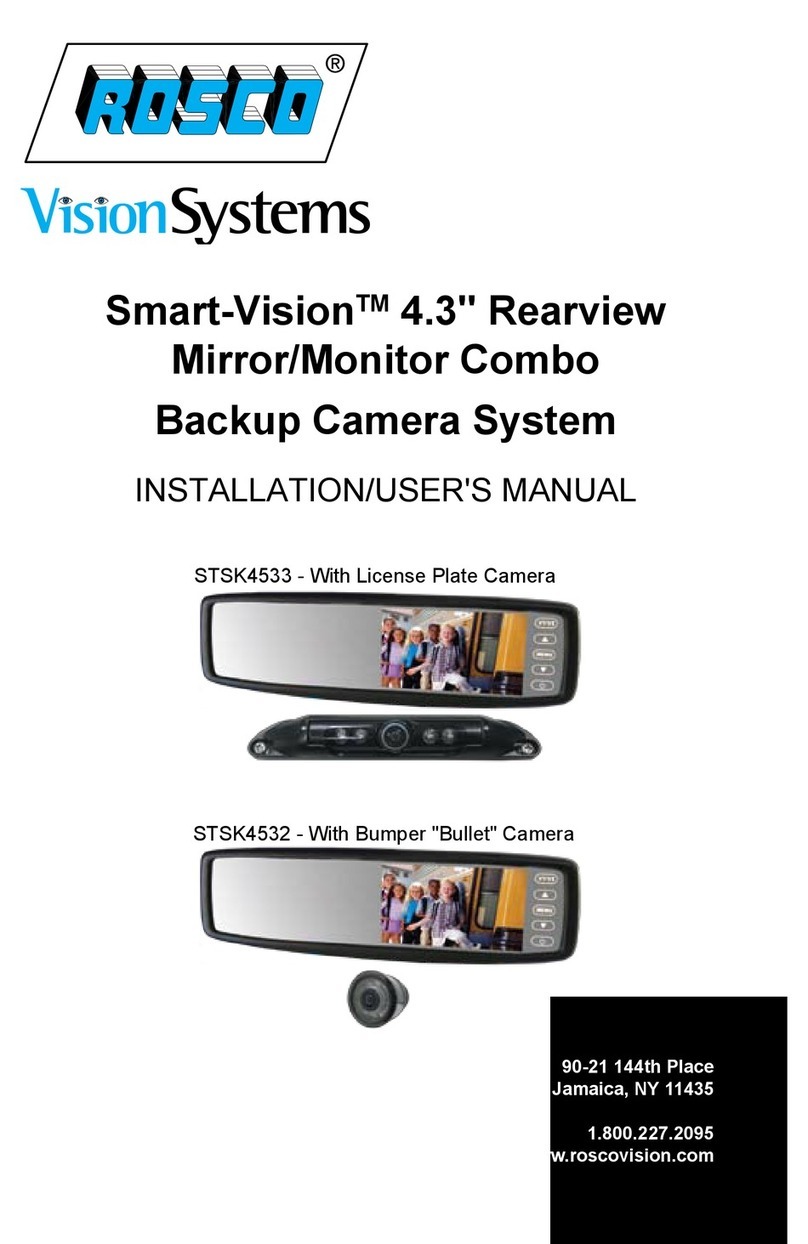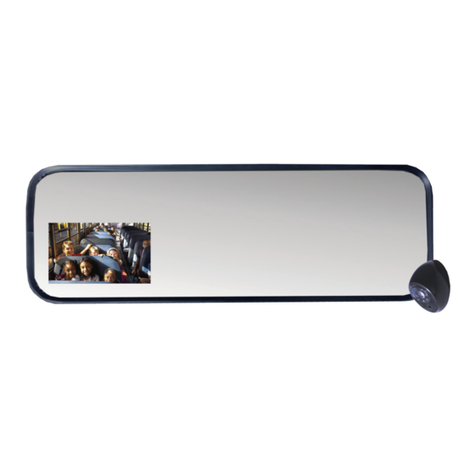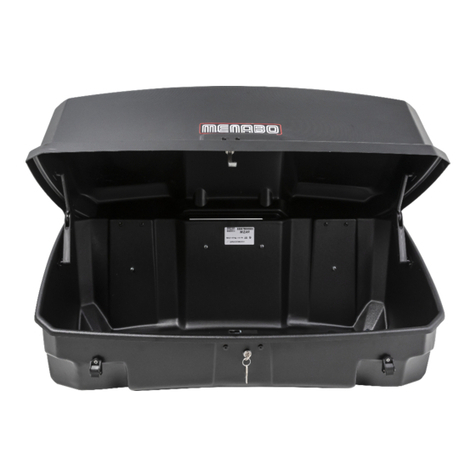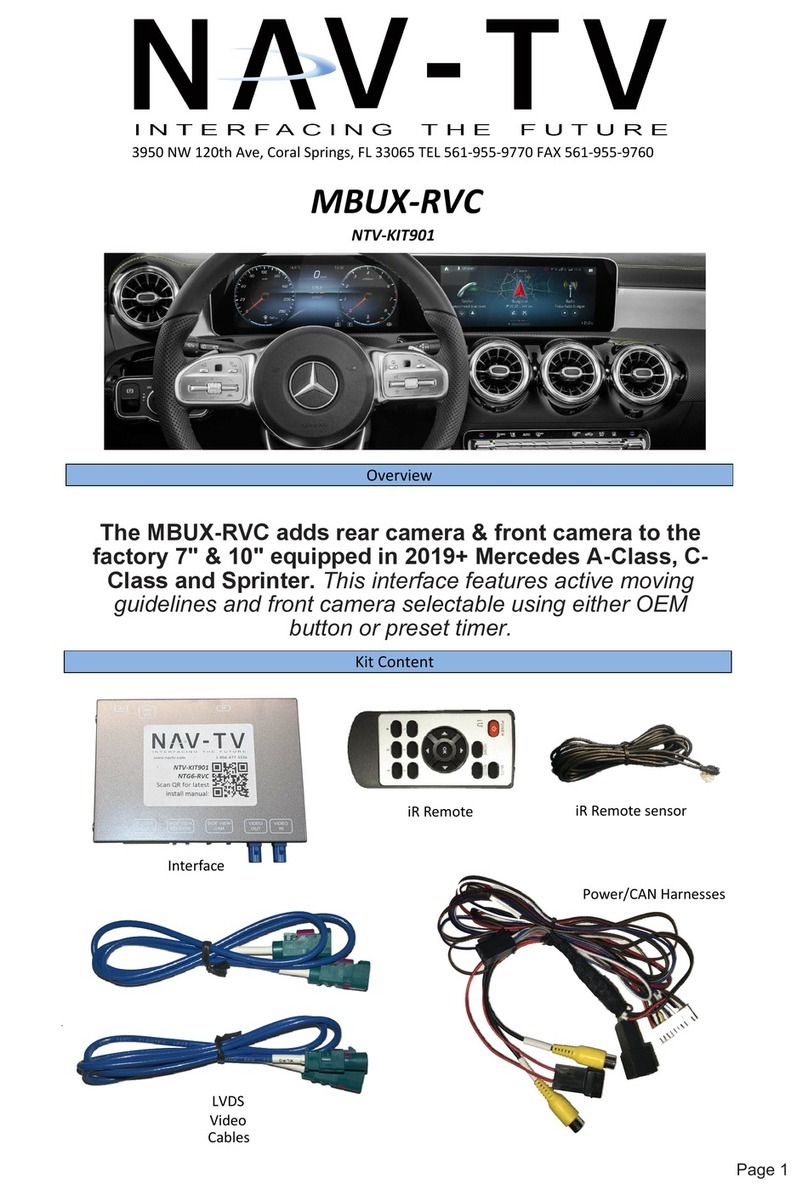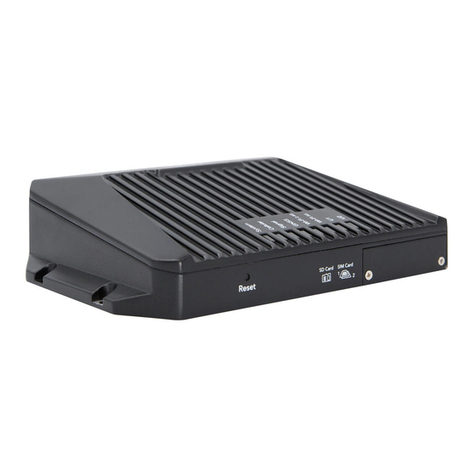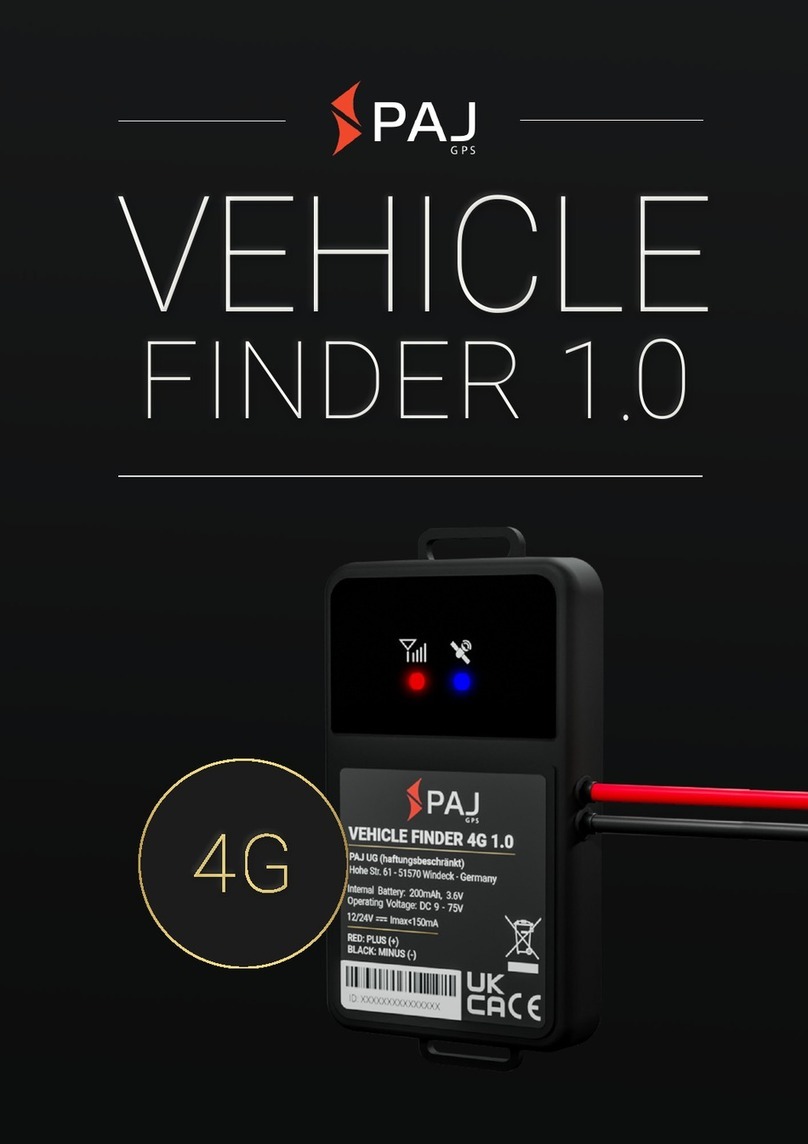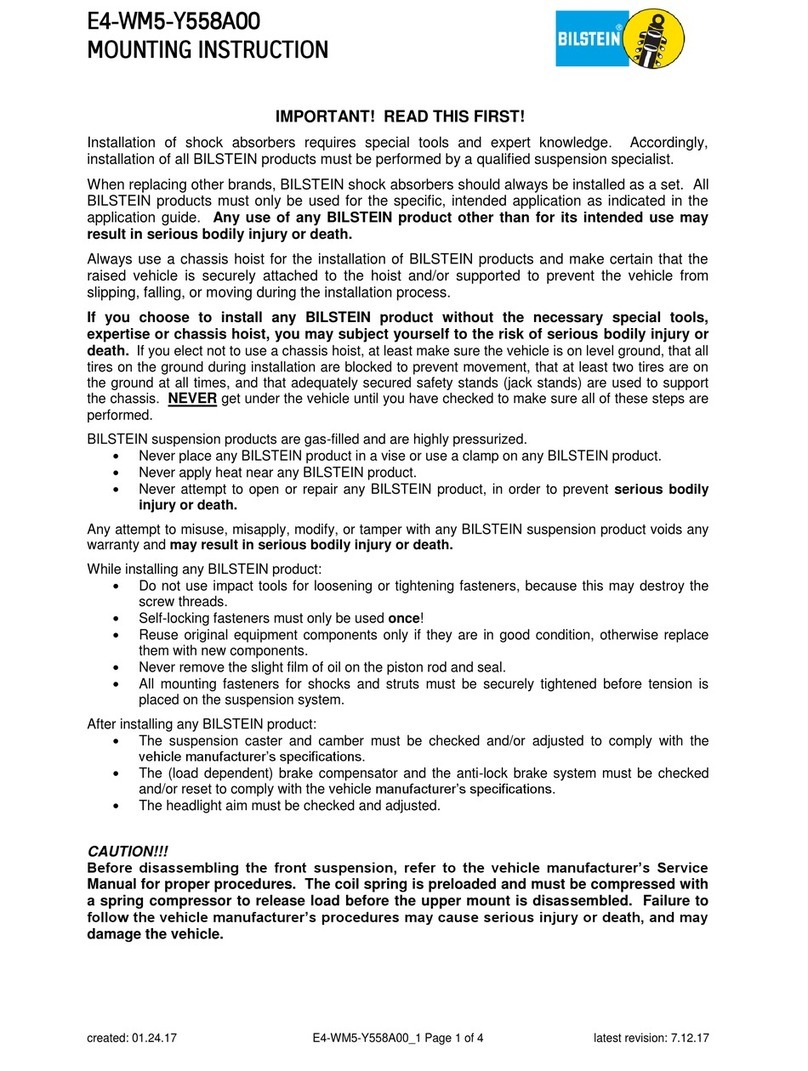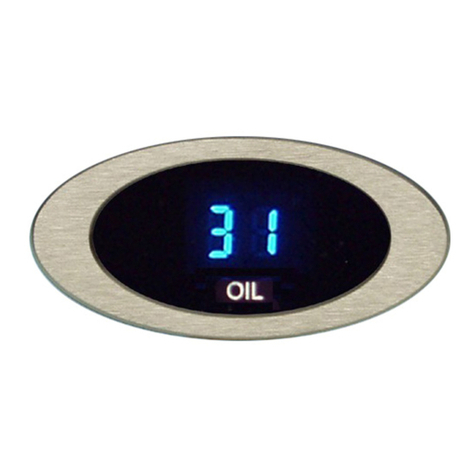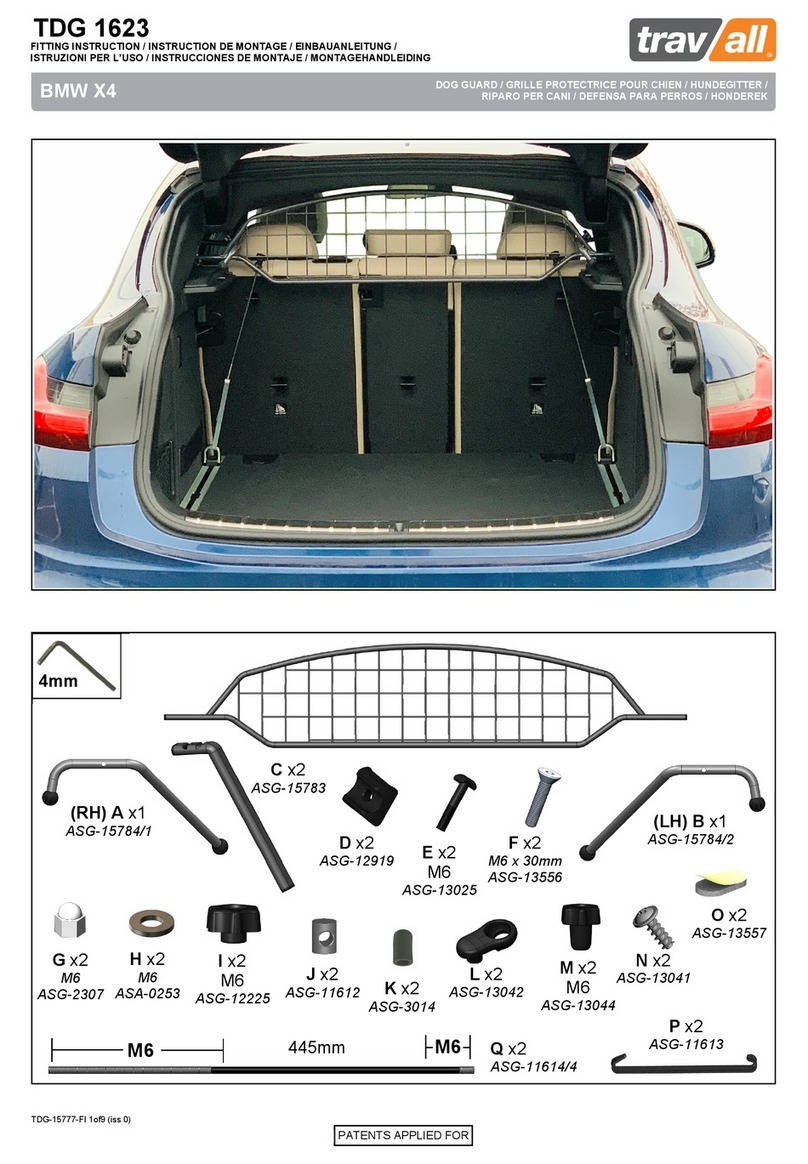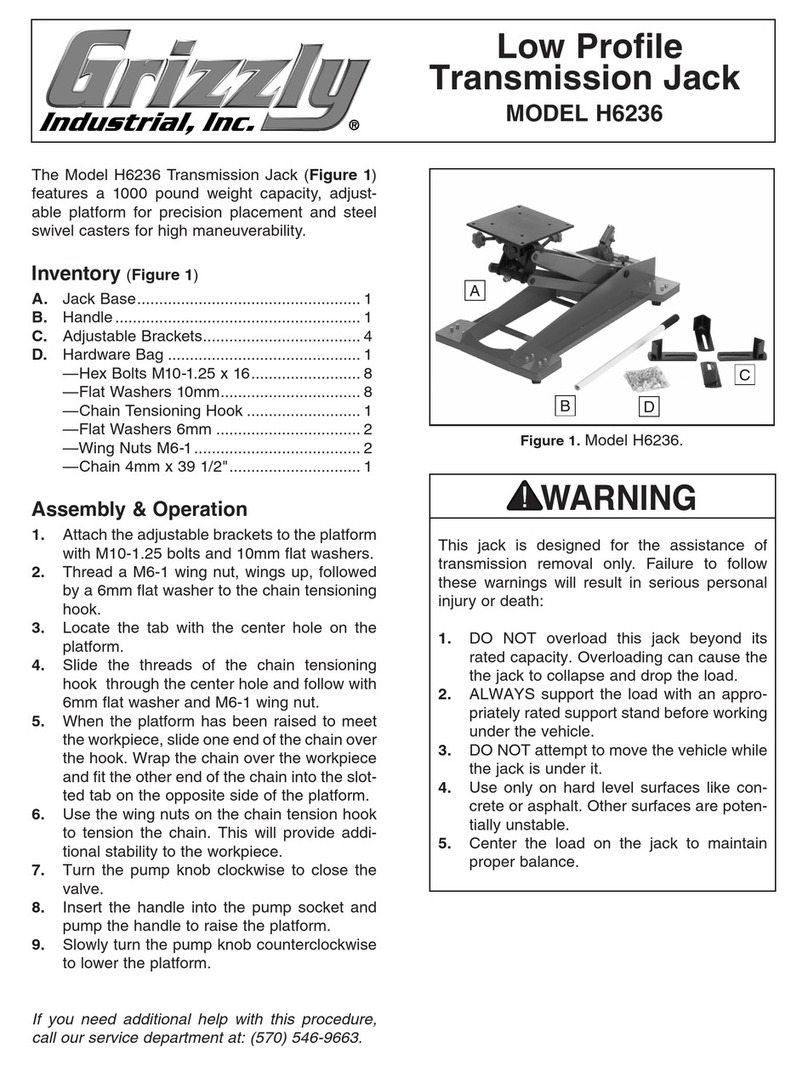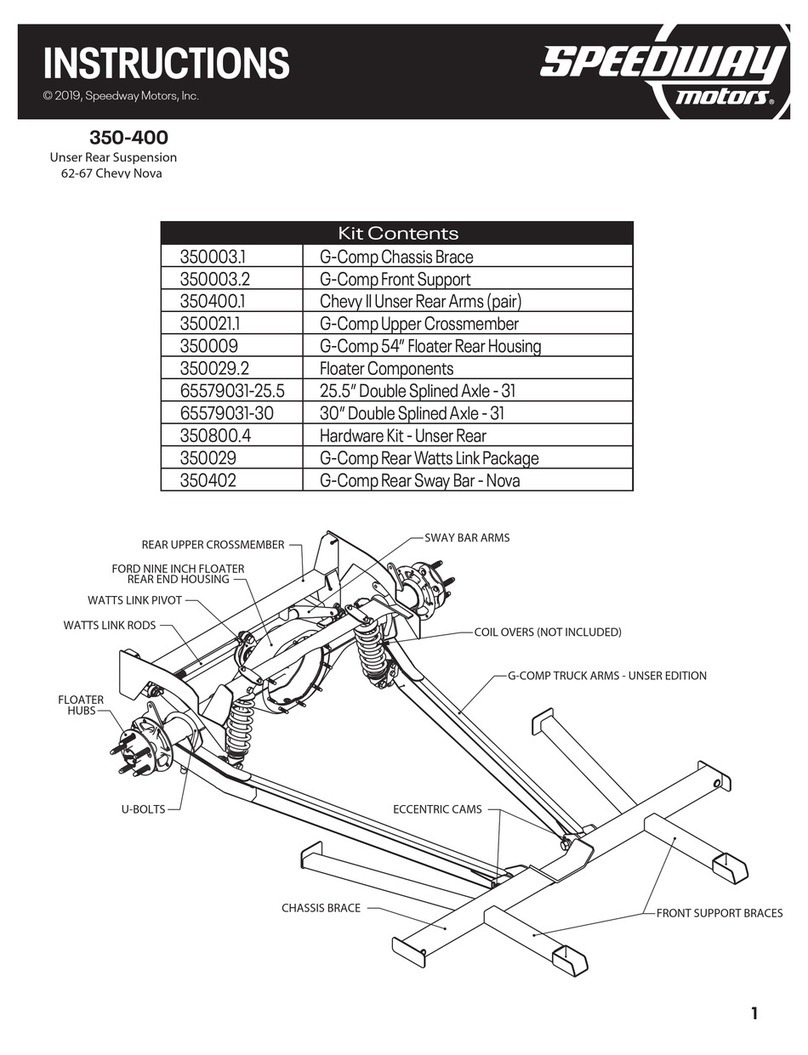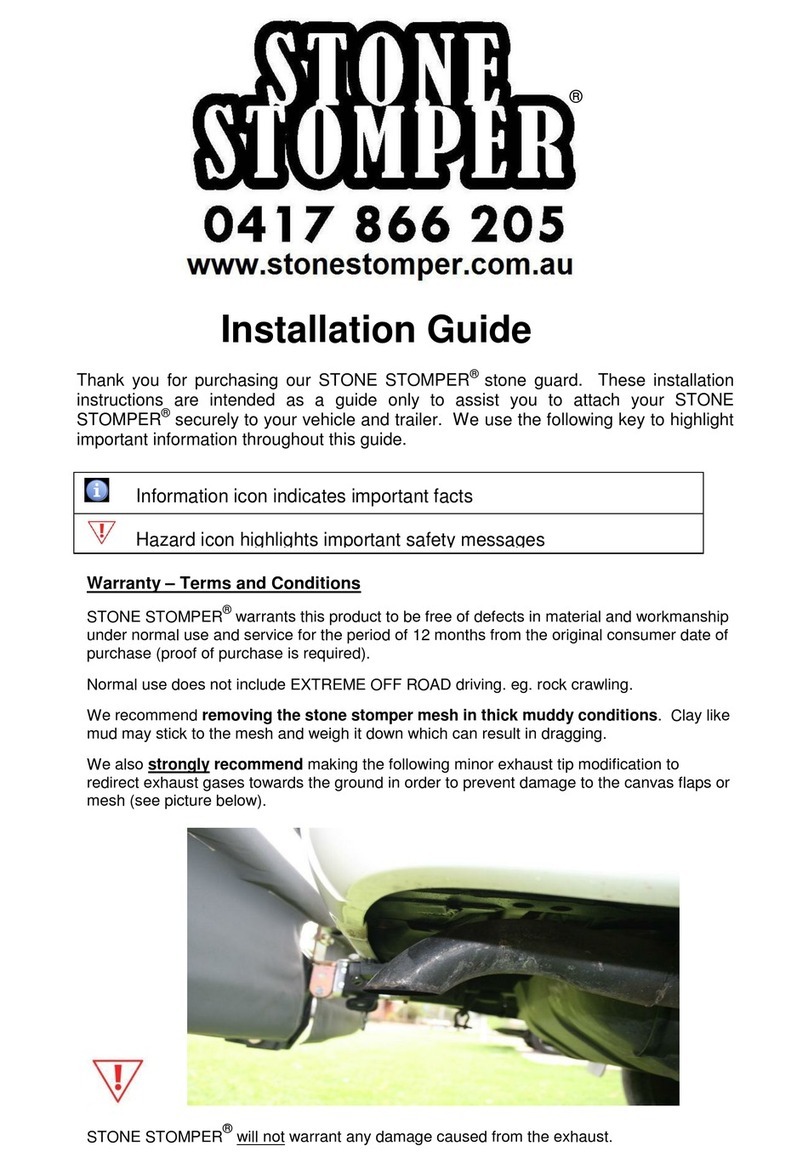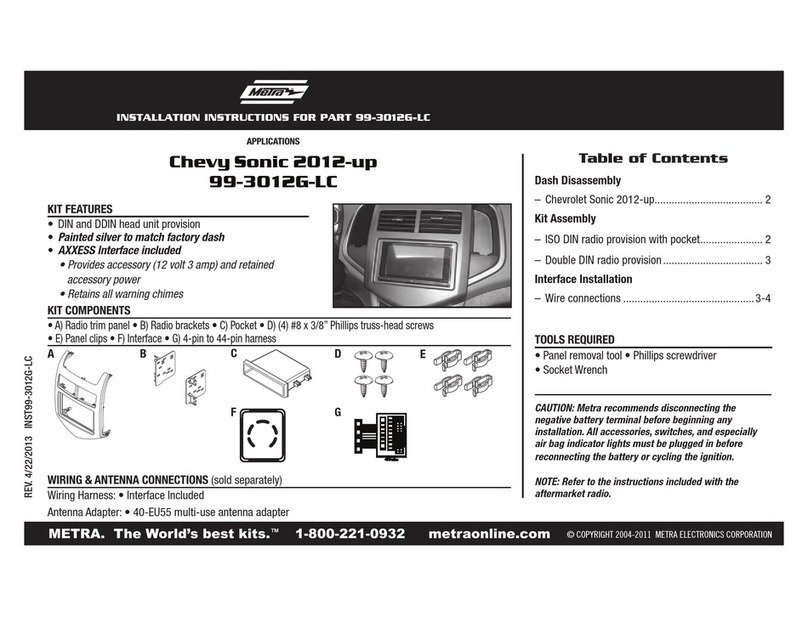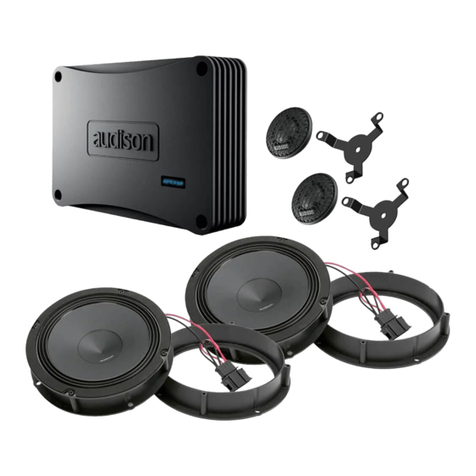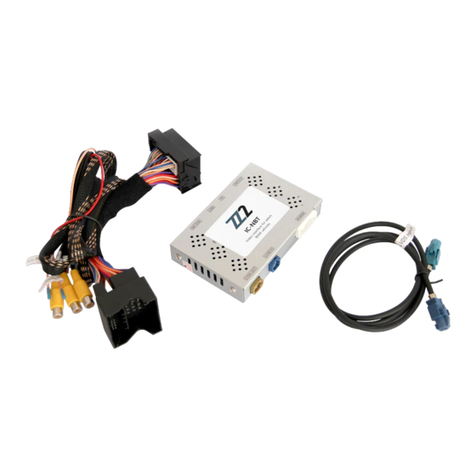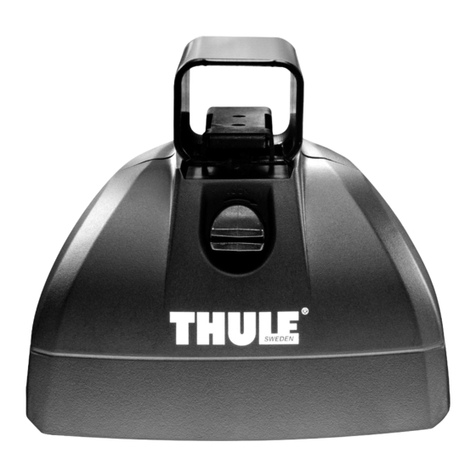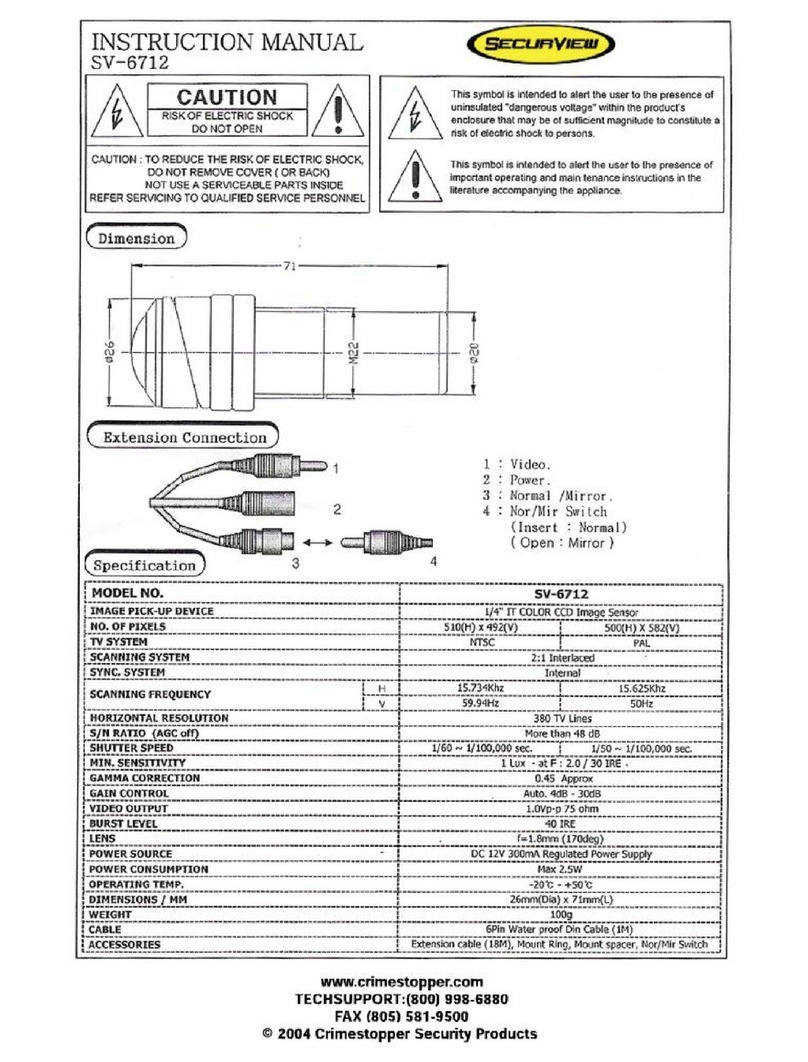Rosco SAFE -T-SCOPE STSK7165 Instruction Manual

SAFE -T-SCOPE®
7” REARVIEW BACKUP CAMERA SYSTEMS
INSTALLATION /USER MANUAL
STSK7165

STSK7165 USER MANUAL STSK7165 USER MANUAL
2
WARNING
1. To prevent electrical shock, DO NOT OPEN THE MONITOR CASE.
There are dangerous voltages inside the monitor. There are no user
serviceable parts inside.
2. Avoid exposing monitor to water, rain, moisture etc. It is NOT waterproof.
Any moisture inside the monitor could cause extensive damage.
3. Do not disassemble the camera or the monitor. This voids the warranty.
Disassembling the camera will compromise the waterproof seal.
STORAGE
1. Do not expose the monitor to excessive heat or cold. The storage
temperature of this machine is -22ºF~+176ºF, and operating temperature
is -4ºF~+158ºF. The humidity is Rh 90%.
2. The monitor is not waterproof. Do not store or operate in moist or
wet environments.
MAINTENANCE
1. Disconnect the cable connection to monitor before cleaning the unit.
2. Use a mild household detergent and clean the unit with a slightly
damp cloth.
GENERAL
1. This system is intended for use in automotive applications. Power source
should be an automobile storage battery (12V/24V).
2. Make sure all cables are connected properly. Improper cable connections
may damage the system. Remove the cable connection when you do not
intend to use the unit for a long period of time.
3. Please install this system according to the instructions in this manual.
4. Connect the system to an ignition switched power source. Connection
to an unswitched battery source will reduce battery life.
1
1. High voltages exist within the monitor. Opening of monitor case is unsafe, and never
necessary for operating purposes.
2. In case of any failure, please turn off the display at once, and notify our company
or the corresponding dealer. The monitor is made up of many precise electronic
components. Any disassembly or modification may lead to damage and voiding of warranty.
WARNING !
This device complies with part 15 of the FCC rules. Operation is
subject to the following two conditions:
(1) This device may not cause harmful interference.
(2) This device must accept any interference recieved,
including interference that may cause undesired operation.

STSK7165 USER MANUAL STSK7165 USER MANUAL
34
Front View
1. Power indicator
2. Power
3. up/down or less/more
4. SEL scle on/off or menu selection
5. MENU
6. CA SEL camera selection
7. Day/Night Sensor
STSK7165 COLOR BACKUP CAMERA SYSTEM
INTRODUCTION
Please read this manual thoroughly. This manual contains instructions to make the
installation of the camera and monitor easier. The color backup camera system is a
supplement to standard rearview mirror systems, and will provide additional rearview vision
when installed and maintained properly. It is not intended in any way to be a
substitute for careful and cautious driving. All applicable traffic laws and motor vehicle safety
regulations must still be obeyed.
FEATURES
STSC101 CAMERA
• 482,000 pixel image sensor
• 0 Lux sensitivity (4 IR-LEDs)
• Auto White Balance (AWB)
• Field of View (86o (H), 72o (V), 122o(D)
• Back Light Compensation (BLC)
• Automatic electronic iris provides a clearer, more consistent image in low and bright light
• Compact and lightweight design installs easily into most vehicles
• Waterproof/dustproof IP69K rating
• Wind deflector reduces buildup of dirt on lens
STSM205 TFT LCD COLOR 7” MONITOR
• Menu button for Picture, System and Options
• Camera 1/Camera 2 /Camera 3
• Power/stand-by switch
• Powerful built-in speaker
Expansion Capability - System Can Accept Up To 3 Camera Inputs
1 Camera
1 Camera bracket
4 Attachment screws with washers
1 Wind deflector
1 Monitor
1 Sunshield
1 “Duckfoot” universal bracket for surface-mounting of
monitor on dashboard or headliner, including adhesive pad
1 U-Bracket - Optional mount
1 Adaptor for flush-mounting of monitor in dashboard
1 Power/video/audio distribution harness for up to 3 cameras
1 65’ Camera extension cable
PARTS LIST

STSK7165 USER MANUAL STSK7165 USER MANUAL
56
INSTALLATION INSTRUCTIONS
Note: The following instructions are for typical rearview application.
STSC101 CAMERA
1. Attach camera bracket close to rear marker lights, centered on vehicle (see Fig.1.)
Attachment point must be sturdy enough to support camera and bracket.
2. We do not recommend mounting the camera near the lower area of the
vehicle (e.g. bumper). This reduces the view of the camera and increases
the chance of physical damage to the camera.
3. Attach camera to bracket using screws provided. Adjust angle as indicated
in Fig. 2. (Use rear bumper and back of vehicle as a reference point.)
4. Wind deflector may be installed. This deflector is designed to reduce the
buildup of dust, dirt and moisture on the camera lens. (See Fig.3)
STSM205 MONITOR
1. Attach monitor inside vehicle in a location convenient to the driver (e.g.
center of dash, overhead, or flush-mounted in dash).
2. Attach “U” or “duckfoot“ bracket to the dashboard or to the headliner
using self-tapping screws and/or adhesive pad. (See Fig. 4.)
3. Fasten monitor to bracket and adjust mounting angle to allow optimum driver
viewing comfort.
CABLE
1. The camera to cable connection is waterproof. Be sure to position the cable
properly. The male end attaches to the camera. The female end attaches to the
power/video/audio distribution harness, typically located under the dashboard.
(See Fig. 5.)
IMPORTANT: For typical rear-view installation, the rear
camera MUST be connected to the distribution harness at
the connector marked “CA3”
2. Do not run the cable over sharp edges or corners. Do not kink the cable.
Keep the cable away from hot and rotating parts.
3. Fasten all cable runs, and secure all excess cable.
WIRING CAMERA AND MONITOR
1. See wiring diagram for connections to ignition, ground and “backup lights” circuit.
(See Fig. 5.)
2. Before drilling, be sure no cable or wire is on the other side. Be sure to drill a 20mm
(0.8in) diameter hole only.
3. Feed as much cable as possible into vehicle and clamp securely. This reduces
the possibility of it being hooked or snagged.
4. Keep all cables away from HOT, ROTATING and ELECTRICALLY NOISY components.
5. Camera: Drill a 20mm (0.75in) diameter hole into vehicle body near the camera
and bracket. Insert camera cable into vehicle (be careful not to kink cable) and fit
grommet into hole. Apply sealant around grommet to increase resistance to water
penetration. Connect camera to the camera extension cable which runs inside
the vehicle.
6. Monitor: The monitor terminates in a 13-pin male connector, which should be
connected to the mating 13-pin receptacle end of the power/video/audio distribution
harness.
7. For typical rear-view installation, connect the camera extension cable from the
rear-view camera to the harness’s connector marked CA3.
8. For multi-camera installations using cameras CA1 and/or CA2, be sure to mark each
extension cable properly and connect to the appropriate harness connector
marked CA1 or CA2. Bundle excess cable together using a cable tie or electrical tape.
9. Connect the red wire to an ignition power source, and connect the black wire to
chassis ground. The brown wire is the trigger wire. In typical rear-view installations,
connecting this wire to the vehicle’s backup light circuit will activate the rear-view
image whenever the vehicle shifts into reverse.
10. FUEL TANKERS & OTHER SPECIALTY VEHICLES: All electrical equipment fitted
to petroleum vehicles must be connected via battery master switch and must be
isolated from the battery while the vehicle are loading and unloading. For other
specialty vehicles, please check applicable code and regulations prior to installation.
11. Always consult your dealer when fitting any electrical or electronic equipment to a
vehicle fitted with a CAN-bus or multiplex system.
IMPORTANT: For installations requiring multiple cameras, or for installations not
requiring typical rear-view images, please refer to the wiring diagram (Fig.5) and the
particularvehicle’s electrical schematic for selection of proper power and trigger
connection points.

STSK7165 USER MANUAL STSK7165 USER MANUAL
78
FUNCTIONS AND OPERATIONS
MONITOR
1. POWER LED
When the red LED is on, it indicates power on, monitor in standby mode,
waiting for trigger signal.When a trigger is selected, the image captured by the
selected camera will appear on the monitor.
2. An on-screen scale will appear when the trigger (typically rear-view) for camera
3 is energized.
3. Pressing the power switch will change the monitor status from standby to
steady-on. Steady-on mode status indicated by green LED light.
4. In steady-on mode, driver may activate the scale by pressing the SEL button.
Pressing SEL again will remove the scale.
5. CONTROL BUTTON
These control buttons are used to adjust the values within selected options
6. SEL.
SELECT CONTROL BUTTON
Use the button in order to select the required option in the menus.
* NOTE: Prior to accessing menu options, place monitor into
Steady-On (Green Light) mode.
7. ‘MENU’ Button
Each press of the ‘MENU’ will bring up one of the following screens.
• PICTURE
• OPTION
• SYSTEM
The menu list will disappear if no selection is chosen within 15 seconds.
8. CA.SEL
Camera selector button
Enables selection of CA1, CA2 and CA3.
The OSD (On Screen Display) indicates which camera is currently operating.
9. REMOTE-CONTROL SENSOR
The monitor can be operated via remote control. If using remote control,
ensure that the IR on the remote control is facing the monitor.
HOW TO SET YOUR MONITOR TO YOUR REQUIREMENTS
NOTE: On-screen menu commands may only be selected when monitor is in
Steady-on (green light) mode. When monitor is in standby mode, and activated
by trigger signal, on-screen menu commands are disabled.
1. PICTURE CONTROL
1.1 Press the MENU button once to enter picture menu
1.2 Move the cursor to the BRIGHT, CONTRAST, COLOR and
VOLUME
1.3 Using SEL button, highlight the item you wish to change
1.4 Press the buttons to adjust values
1.5 Press the MENU button to close menus, or SEL button to adjust a different
menu item.
2. OPTION CONTROL
2.1 Press the MENU button twice to enter OPTION
2.2 Press SEL to select language, scale, or camera settings
2.3 Press the button to adjust values/items within the selected field
2.4 Select one of two options to view NORMAL or MIRROR image settings
NOTE: changing the image will also change the OSD
3. SYSTEM CONTROL
3.1 Press the MENU button
3.2 Select SYSTEM
3.3 Move the cursor to the COLOR SYSTEM, BLUE BACK, HORIZONTAL,
VERTICAL with the SEL button
3.4 Press the button to set value

STSK7165 USER MANUAL STSK7165 USER MANUAL
910
SPECIFICATIONS
STSC101 CAMERA
PICK-UP DEVICE 1/3” Sharp CCD
TV SYSTEM NTSC
PICTURE ELEMENTS 976(H) x 494(V)
SYNCHRONIZATION INTERNAL
HORIZONTAL RESOLUTION 750 TV LINES
REQUIRED ILLUMINATION 0 LUX MINIMUM
POWER SUPPLY 12Vdc
POWER CONSUMPTION < 3w @12 VDC
CURRENT CONSUMPTION < 250 mA @ 12 VDC
FIELD OF VIEW 86º(H), 72º(V), 122º (D)
OPERATING TEMPERATURE -22ºF TO 158ºF (-30ºC TO +70ºC)
STORAGE TEMPERATURE -40ºF TO 185ºF (-40ºC TO +85ºC)
WEIGHT 0.69 lb (315g)
DIMENSIONS (W x H x D) 3.4 x 3.1 x 2.7in (80 x 80 x 70mm) (with mount)
STSM205 MONITOR
SCREEN 7.0 inch (127mm) HIGH QUALITY DIGITAL LCD
VIEWING ANGLE 50(T) x 70(B) x 70(L) x 70(R)
POWER CONSUMPTION 5W/12V
POWER SOURCE 10-32 Vdc
TV SYSTEM PAL/NTSC
VIDEO INPUT/OUTPUT COMPOSITE VIDEO SINGLE (1VP-P 75 OHM)
RESOLUTION 800 x 480
CONTRAST 500:1
BRIGHTNESS 400cd/m2
OPERATING TEMPERATURE -4°F TO 158°F (-20°C TO +70°C)
STORAGE TEMPERATURE -22°F TO 176°F (-30°C TO +80°C)
WEIGHT 445g
OUTER DIMENSIONS 7.2 x 4.8 x 1.2in (182 x 122 x 30mm)
(W x H x T) (without flush mount)
DISCLAIMER: The use of the STSK7165 Vehicle CCTV system should not in any way be used as
a substitute for careful and cautious driving. Always obey traffic laws and motor
safety regulations must always be adhered to. Specifications subject to change without notice.

STSK7165 USER MANUAL STSK7165 USER MANUAL
11 12
Fig. 3

STSK7165 USER MANUAL STSK7165 USER MANUAL
13 14
Note: For typical single camera installation, this trigger wire should be connected to
the vehicle’s “back up lights” circuit, and the rear-view camera should be attached to
the connector marked “CA3”

A CENTURY OF AUTOMOTIVE VISION SAFETY
90-21 144th Place, Jamaica, New York 11435
TEL (800) 227-2095 • FAX (718) 297- 0323
Lit. P/N: M012617C
Lit. Rev Date: Jan 26, 2017
This manual suits for next models
2
Table of contents
Other Rosco Automobile Accessories manuals
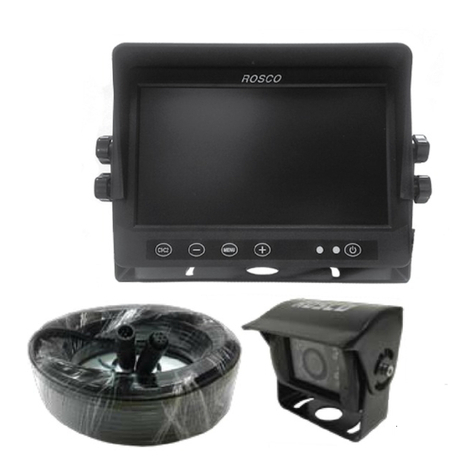
Rosco
Rosco Safe-T-Scope STSK7565 Instruction Manual
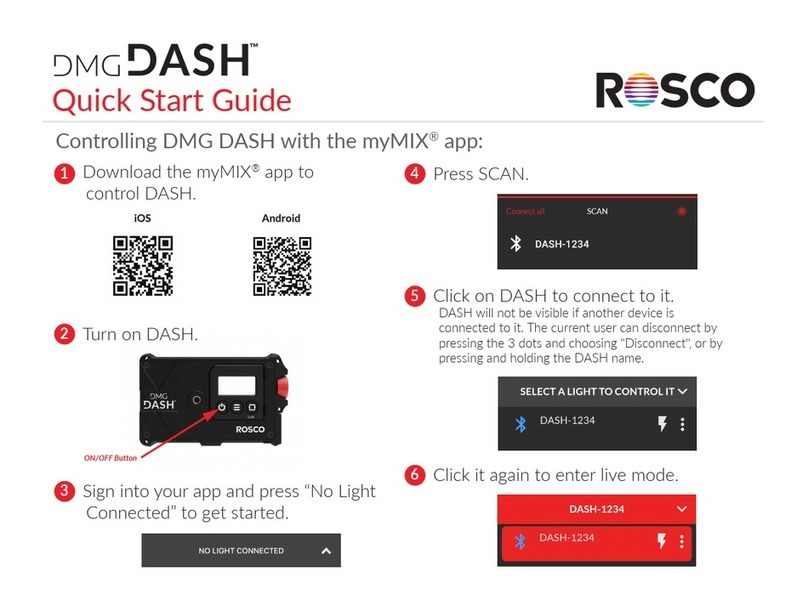
Rosco
Rosco DMG DASH User manual
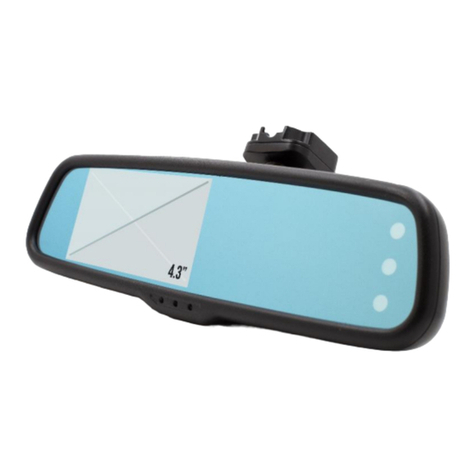
Rosco
Rosco STSM240 Assembly instructions

Rosco
Rosco BSSK1000 Instruction Manual
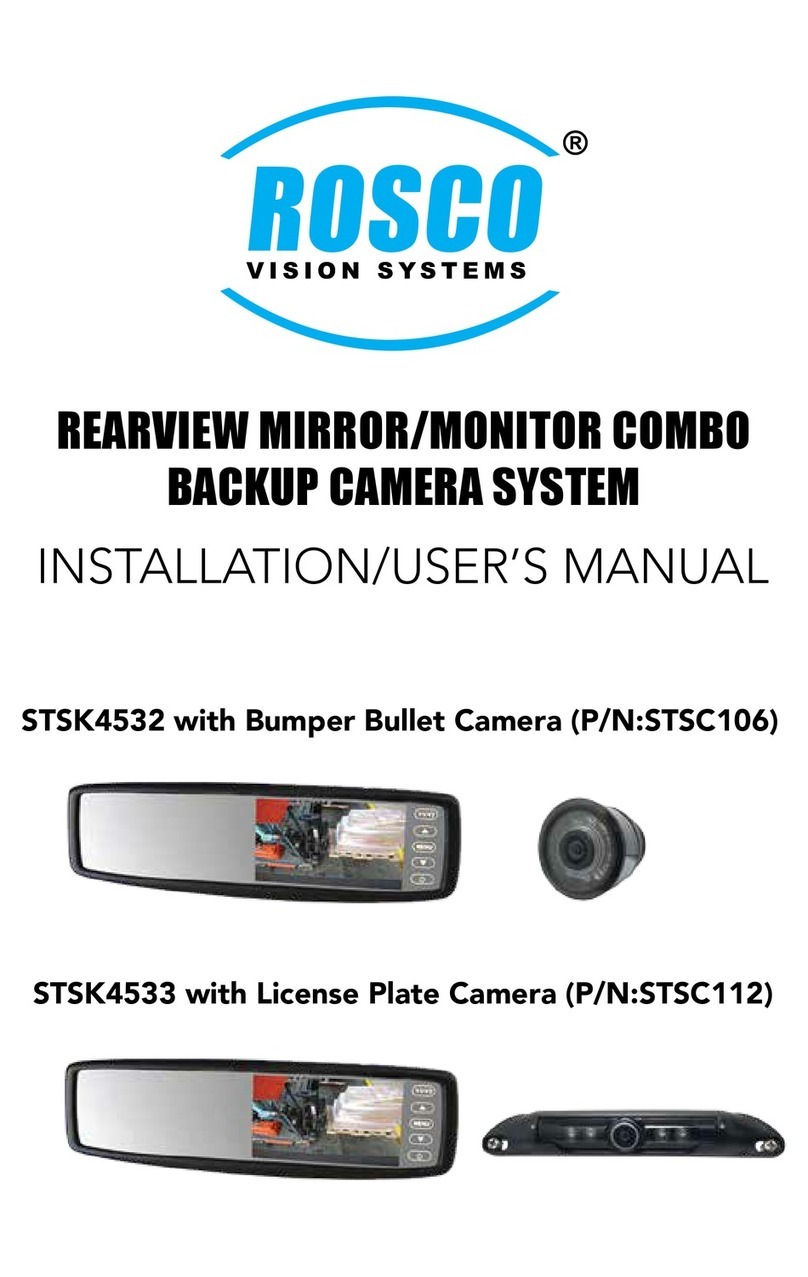
Rosco
Rosco STSK4532 Instruction Manual
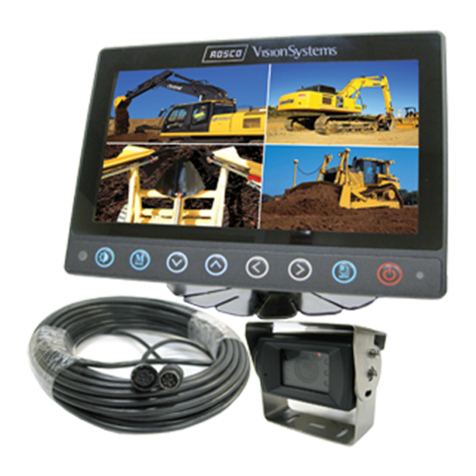
Rosco
Rosco SAFE -T-SCOPE Instruction Manual
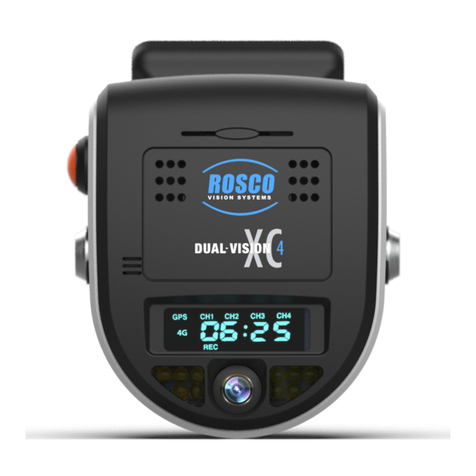
Rosco
Rosco Dual-Vision XC4 User manual
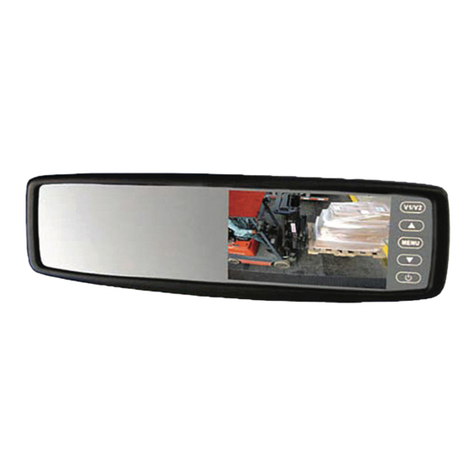
Rosco
Rosco STSK453X Series Instruction Manual
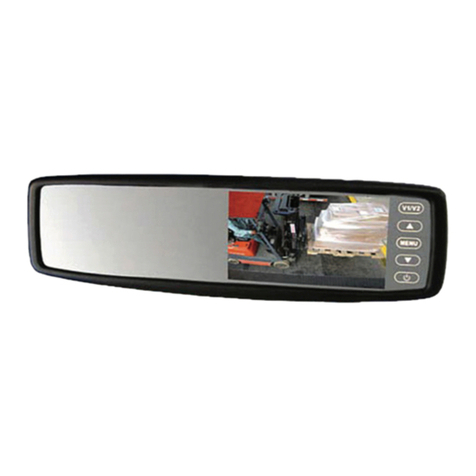
Rosco
Rosco STSK4531R Instruction Manual
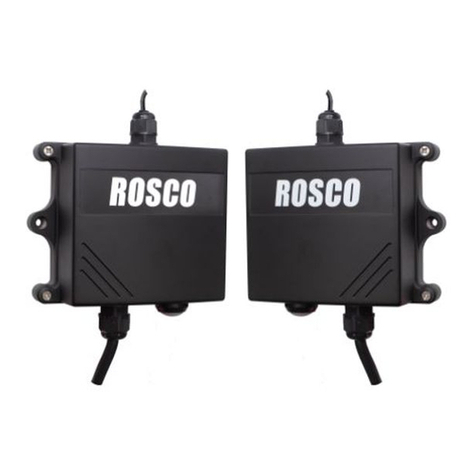
Rosco
Rosco STSW1001 Series Instruction Manual
